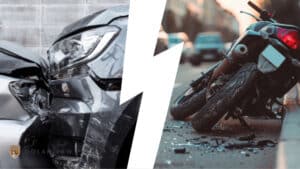
Nate from Oakland writes: I know, of course, that police and fire trucks are entitled to speed down city streets with sirens and flashing lights when responding to emergencies. But I’m sure I’m not the only one to have also seen police cars slide through red traffic lights for no apparent reason. Is this legal? What are the rules of the road for emergency vehicles and what happens if someone is hurt by one, for example, running a red light?
Thanks for your question, Nate. It can be confusing to know when police are using their law enforcement authority legitimately and when they’ve exceeded their lawful limits, especially in cases when an innocent member of the public gets hurt.
In general, California Vehicle Code (CVC) regulations apply to all drivers, whether or not they are acting in a law enforcement or other public capacity. The only exception to that rule, provided in CVC Section 21055, applies when an authorized emergency vehicle is either: (1) responding to an emergency call or fire alarm; (2) engaged in rescue operations; or (3) in immediate pursuit of an actual or suspected violator of the law.
In any of these situations, the emergency vehicle drivers are required to warn the public with red lights visible from the front of their vehicles and, when reasonably necessary, activation of sirens. So, in answer to your first question, it is not legal for a police car to “slide through a red light for no apparent reason” and they or their fellow officers would be justified in issuing them a traffic ticket!
Each municipality establishes “general orders” governing local practices for determining when emergency driving, dubbed a “Code 3 response” in police parlance, is necessary. These local regulations vary somewhat (for example, Oakland Police Department’s General Order J-4.1 restricts vehicles to a maximum of 20mph above the posted speed limit, while San Francisco Police Department’s corresponding General Order 5.05 makes no mention of a maximum speed), but they may never contradict the overriding state law.
In Oakland, a police officer may only initiate a Code 3 response if specifically instructed by a dispatcher or supervisor, or if the officer reports field information not available to the dispatcher or supervisor indicating that specific, identifiable circumstances warrant such a response. Once a Code 3 response is underway, supervisors must continually monitor the situation, weighing the gravity of the emergency at hand against the danger of collision created by traffic deviations, and terminate emergency driving as appropriate.
Moving on to your final question, what happens if a member of the public is injured by a police car out of compliance with ordinary traffic laws, the legal determination depends heavily on the facts of a particular case. CVC Section 21055 is an affirmative defense, meaning that an officer sued for personal injuries or property damage seeking to avoid liability has the burden of proving that their conduct satisfied every element of the exception.
Relevant court decisions explain that the exceptions provided in CVC 21055 are designed to ensure a emergency vehicles a “clear and speedy pathway” when the risks to the public from an emergency outweigh the risks to the public from the emergency vehicle’s haste, such that the driver should not be held liable for mere traffic violations in these extraordinary circumstances. See, e.g., Peerless Laundry Services v. City of Los Angeles (1952) and City of Sacramento v. Superior Court (1982). However, even when emergency vehicle drivers are justified in skirting ordinary traffic rules, CVC Section 21056 admonishes that they are not relieved from “the duty to drive with due regard for the safety of all persons using the highway.”
Therefore, there are four situations where an emergency vehicle driver might fail to satisfy the requirements for Code 3 exceptions and therefore be held liable for injuries caused while ignoring ordinary traffic rules. First, the driver may be held liable if they have disobeyed traffic laws despite having neither received information to justify a Code 3 response nor reasonably determined that such a response is necessary given observed conditions.
Second, they may be held liable if they fail to warn the public of the possibility that they will not obey ordinary traffic laws by illuminating a red light visible from the front of their vehicle and, if necessary under the circumstances, activating a siren. Third, they may be held liable if they fail to drive with due regard for public safety given the extraordinary circumstances.
Finally, they may be held liable if they exercise their Code 3 privileges arbitrarily, which has been interpreted to mean that they acted either with knowledge that serious injury to another will probably result or with wanton or reckless disregard of the possible consequences.










